The history of the tournament is linked to key people and events in Dublin’s past
Later this month, association football teams, representing hospitals from across Ireland, will come together in Dublin to compete for the Hospitals Cup, otherwise known as the ‘Independent Trophy’. The tournament’s origins are intertwined with significant figures and events from Dublin’s history.
In 1913, the attempt by James Larkin to unionise workers culminated in the infamous ‘lockout’ of that year. Employers, led by businessman William Martin Murphy, crushed the workers by a combination of starvation and police violence. Murphy became known to a generation of Dublin’s poor as William ‘Murder’ Murphy. Murphy was an enigma. He had a genuine commitment to charitable work. Indeed, at the height of the lockout, one of his charitable initiatives, the annual ‘Herald Hospitals Charity Cup Match’ for the Independent Trophy took place in Dalymount Park.
The Herald Hospitals Charity Match
At the turn of the 20th Century, only two clubs outside Ulster – Shelbourne FC and Bohemian FC – played senior football in the Irish League and only Shelbourne were (semi-) professional. The remaining teams in the province played in the Leinster Senior League (LSL). At that time, football was very strong in the British Army. Teams representing British Army regiments based in Ireland (‘the Irish Army’) played in the LSL and ‘Garrison League’. The matches were widely reported in the papers and army players were well known to the football public. Influenced by a tradition in several cities, the Leinster Football Association mooted the idea of an annual charity match in Dublin. It would involve a combined Shelbourne/Bohemians team taking on an 11 selected from the LSL and the Dublin Garrison League.
The innovative new daily newspaper, the Evening Herald, owned by Murphy, agreed to sponsor the match. This sponsorship complemented Murphy’s central role on the organising committee of the Charitable Infirmary (Jervis Street Hospital). His Independent Newspapers Ltd donated a “handsome silver cup” (the Independent Trophy) to be competed for annually in the charity match. Gate receipts from the match would be distributed among Dublin’s hospitals.
After extensive promotion in the press, the first match for the Independent Trophy was played in February 1906 at Dalymount Park. Advertisements urged the crowd to arrive early in order to enjoy a musical programme performed by the Cameron Highlander’s Pipe Band. A dispute over the referee appointed for the game led to Bohemians withdrawing their players. Shelbourne FC contested the first match alone. An Evening Herald reporter, mixing with spectators incognito, described the event. Several thousand men, soldiers, and civilians, “partial, but tolerant,” crammed into Dalymount. The sections of the crowd who had paid sixpence for admission, including the reporter, were accommodated behind a rope surrounding the pitch. The reporter described the ‘sixpencers’ as far more “boisterous” than those who had paid a shilling or ‘one and six’ to watch from the stands. The crowd were covered throughout in “a haze of nicotine fumes”. Gate receipts generated a very satisfactory, £115 for distribution among the Dublin hospitals.
Sgt Donald Farmer played in midfield for the Leinster selection that day. Farmer had won the Victoria Cross during the Second Boer War. A tall imposing figure, he had an eventful Herald Hospitals Charity Match. After a slow start, he became a “constant stumbling block to the Reds”, but then missed a penalty in “an exciting” 1-1 draw. Extra-time, played at dusk, was illuminated by the ‘sixpencers’ holding wax matches aloft. The teams could not be separated.
In his match report, the Herald reporter encouraged attendance at the replay by recounting the plight of Dublin’s sick poor. He described men on hospital wards dying of tuberculosis, visited by malnourished wives, “with lantern jaws,” deeply troubled by the prospect of losing the sole breadwinner for “a houseful of childer”.
The crowds returned for the replay. Absent from the first game, the presence of Shelbourne legend, Valentine Harris, helped Shels become the first holders of the Independent Trophy. Shelbourne and Bohemians were comfortable winners of the trophy in subsequent years.
New format
In 1911, the organisers changed the match format. An Irish selection now played a team composed entirely of British Army soldiers, including those based outside Dublin (Irish Army XI). Former Southampton FC goalkeeper, Joseph Blacktin of the Royal Welch Fusiliers was a key addition to the army side. Blacktin captained the Army XI to a draw in the 1911 Charity Match. Blacktin was described in England as “a loss to the professional game”. Soldiers were not allowed to play for pay. Indeed, some of the best players in the British regiments stationed in Dublin, played in the Irish League for the purely amateur Bohemian FC. Sgt Jocelyn Rowe of the East Surreys was a case in point. Rowe was described as a “hard player”. He is said to have had an “entertaining tussle” with fellow Bohemians, outside-left Harry Willets (‘the darling of Dalymount’) and inside-left Johnny ‘Dodger’ West in the delayed 1912 Charity Match. In an incident, difficult to imagine today, Manchester United were fined £20 in March 1914, for playing Rowe in the English First Division under an assumed name. As in many cases, Jocelyn Rowe’s football career was ended by wounds suffered during World War I.
Absent from the first game, the presence of Shelbourne legend, Valentine Harris, helped Shels become the first holders of the Independent Trophy
The Irish Army XI of Season 1913/14
On 8 November 1913, during a week in which 600 strike breakers were shipped into Dublin, the Army XI won the Independent Trophy for the first and only time. Two goals scored by their 23-year-old team captain, Lieutenant Sydney Kingston Gore set up an emphatic 4-1 victory. Following the presentation of the trophy, the Army team celebrated at a dinner hosted by the Irish Army FA and spent the evening at the theatre. There would be no repeat of these events the following season.
On 4 August 1914, Germany invaded Belgium. A week later, the players of the Irish Army XI set sail for France, their regiments forming part of the British Expeditionary Force (BEF). The BEF met the German Army at Mons. After heavy losses, the Allies were forced to retreat. Field Marshall Sir John French, commander of the BEF, ordered British troops to retire to England. At this point, those involved in the 1913 Herald Charity Match were returning home. However, by this time, Belgian refugees had reached Paris, bringing with them accounts of German atrocities committed against the civilian population of their country. Some 40 per cent of the civilian population of Paris, mostly women and children, were evacuated in anticipation of food shortages and a brutal German occupation. French Commander, Field Marshall Joffre, begged the British not to “abandon Europe to the same fate as Belgium”. In a momentous about-face, the BEF were ordered into the Valley of the Marne to join the French army in a last stand defence of Paris. In September 1914, two million men fought over three days at the Marne. Allied victory was achieved with great loss of life. Paris was saved, but the presence of the BEF in the Marne Valley, left supply lines from the Channel ports exposed to German attack. Therefore, both armies now manoeuvred north, towards the English Channel. In this ‘Race to the Sea’, the captain of the Irish Army XI, Lieutenant Gore was shot and killed while leading a unit providing cover fire for the Royal Irish Rifles and the Wiltshire Regiment as they retreated from close-quarter fighting in the town of Neuve Chapelle. Of the six members of the 1913 Army team the author has identified to date, three were killed early during the course of the war.
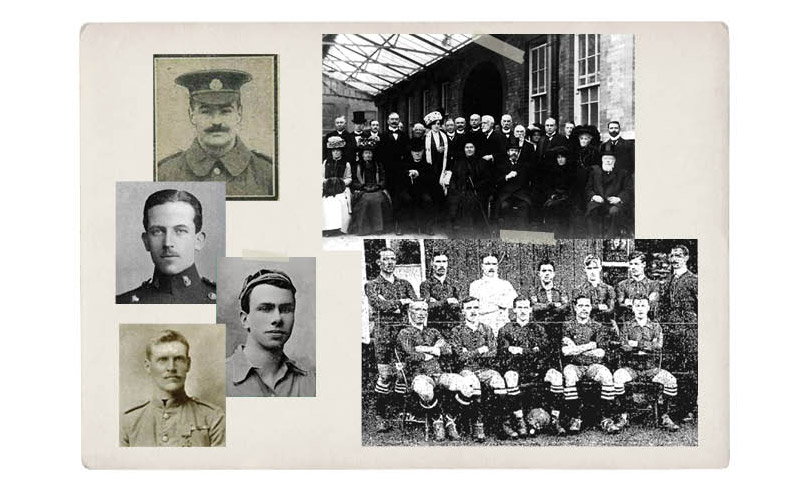
Conscription was never imposed on Ireland, in part due to opposition from Murphy. Murphy’s son, Dr William Lombard Murphy of St Vincent’s Hospital, and many of the men who had played for the Leinster selections in the Herald Charity Match, volunteered to serve in the war. Evidence suggests that these men considered it their duty to do so. Perennial Independent Trophy winner, Harry Willets, suffered life-altering leg injuries at the Battle of the Somme. His fellow Bohemian, Ireland international, Harold Sloan, was killed in action near the Somme. Double All-Ireland winner, soccer international, and member of the 1906 Shelbourne team, Joe Ledwidge, won the Distinguished Conduct Medal at the Battle of Passchendaele.
The Herald Hospitals Charity Match was played on one occasion during the war. In 1917, a full year after the British Army executed the leaders of the Easter Rising, “a very large gate” watched a Leinster selection, including Ireland internationals, comfortably beat the Irish Army XI at Dalymount Park. Following the war, Ireland’s relationship with Britain had changed. The British Army no longer played for the Independent Trophy. In 1948, the trophy was given to Dr Barry Hooper to serve as the prize for an annual tournament between teams representing the Dublin hospitals. Thanks to the efforts of Dr Hooper, his son, Prof Conal Hooper and latterly, Mr Peter Cassidy, the hospitals have played for the trophy ever since.
This year’s Hospitals Cup is taking place 22-23 June. The tournament has been expanded to include teams from all four provinces, in addition to the regular Dublin hospitals.
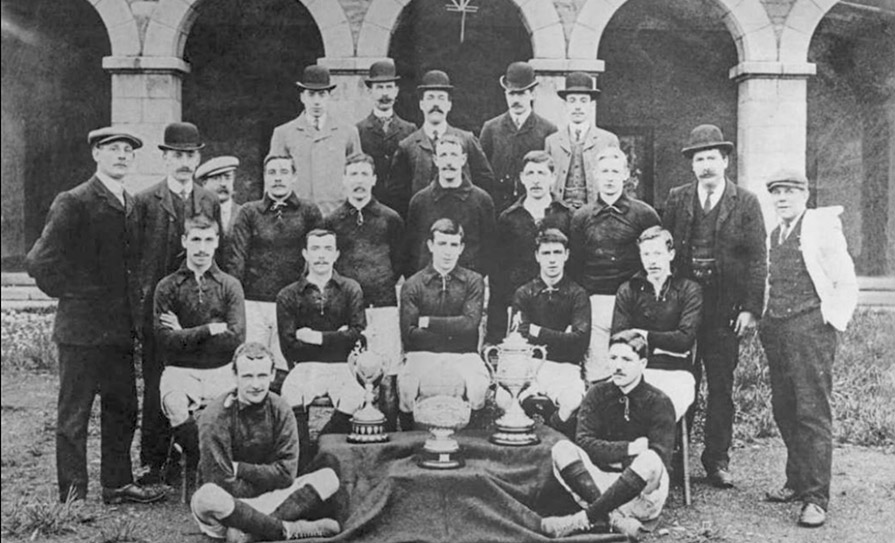
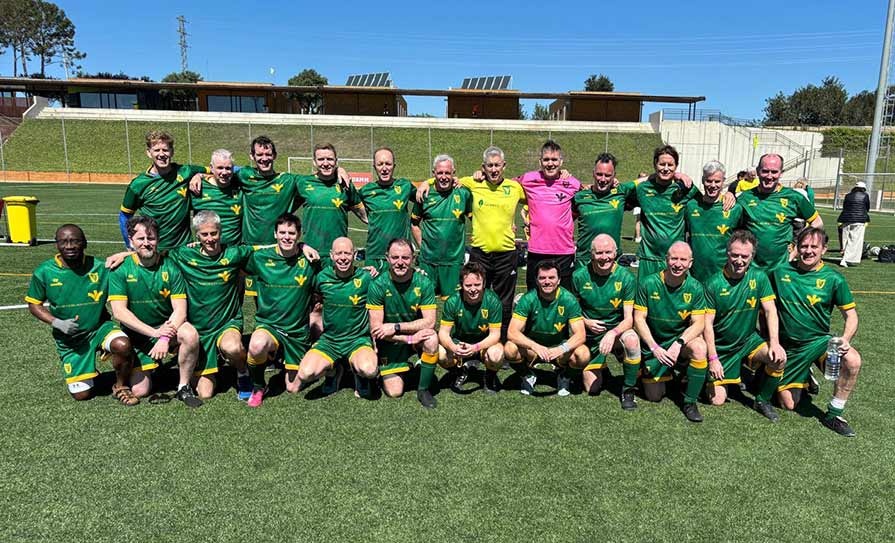
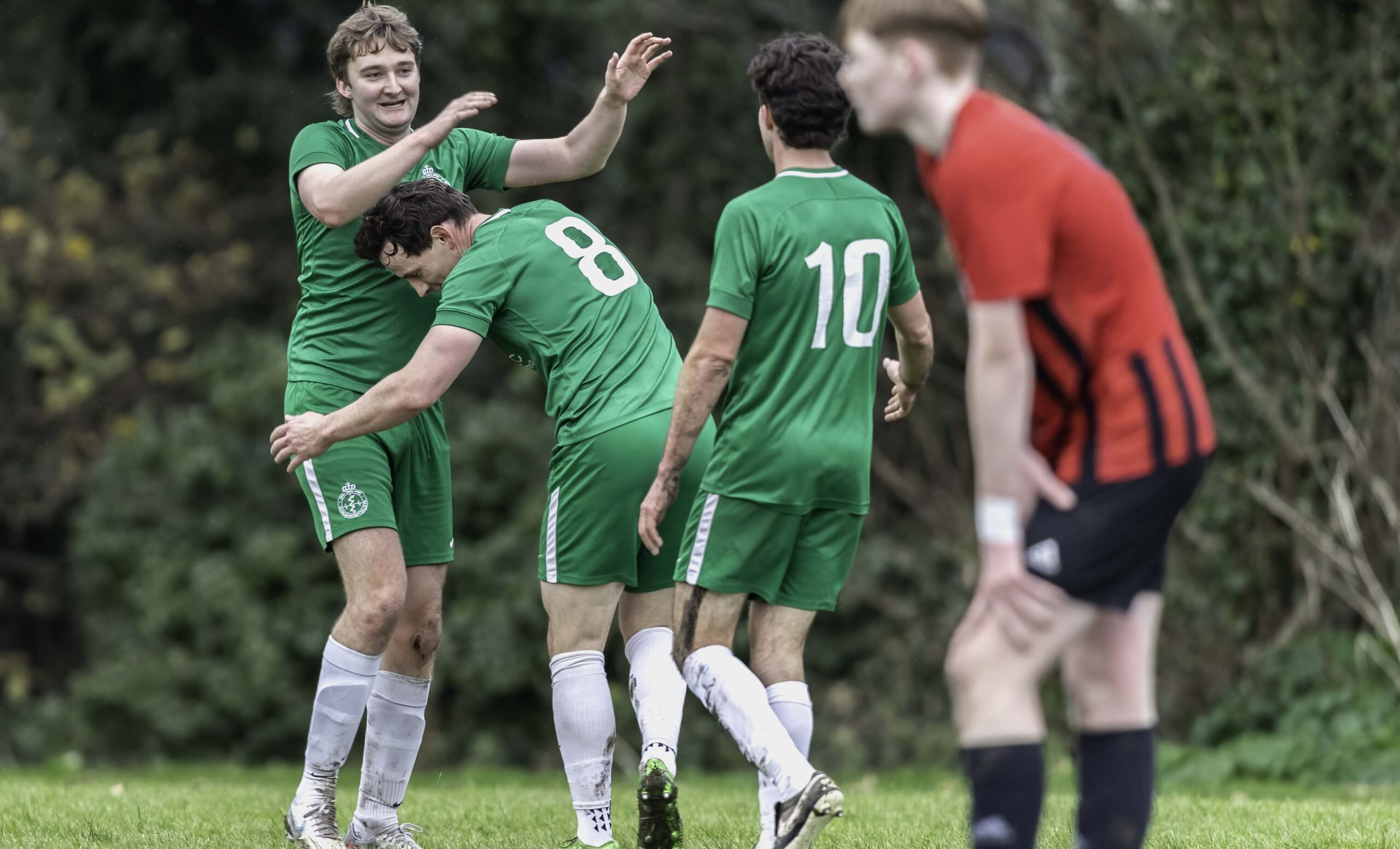
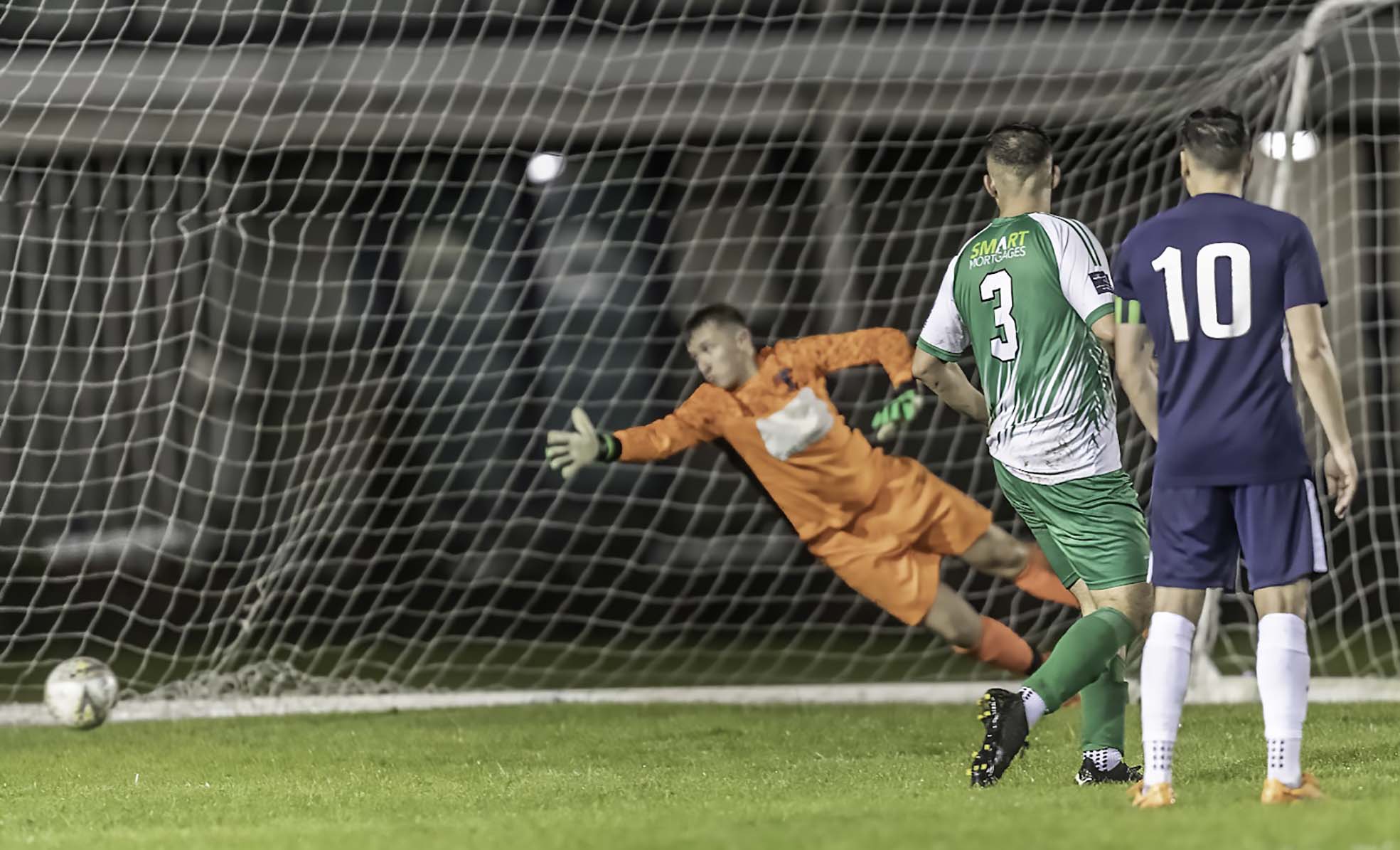
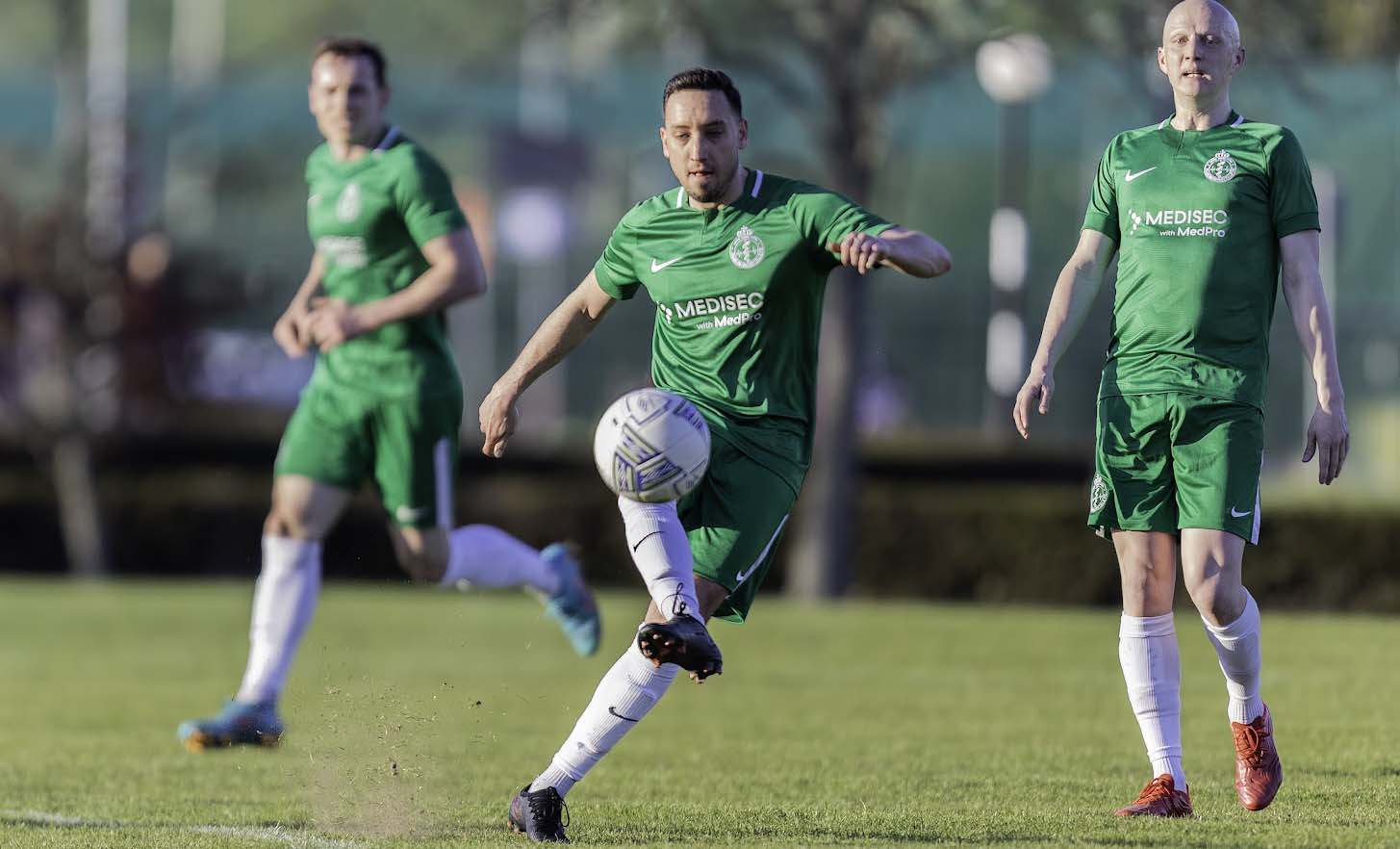


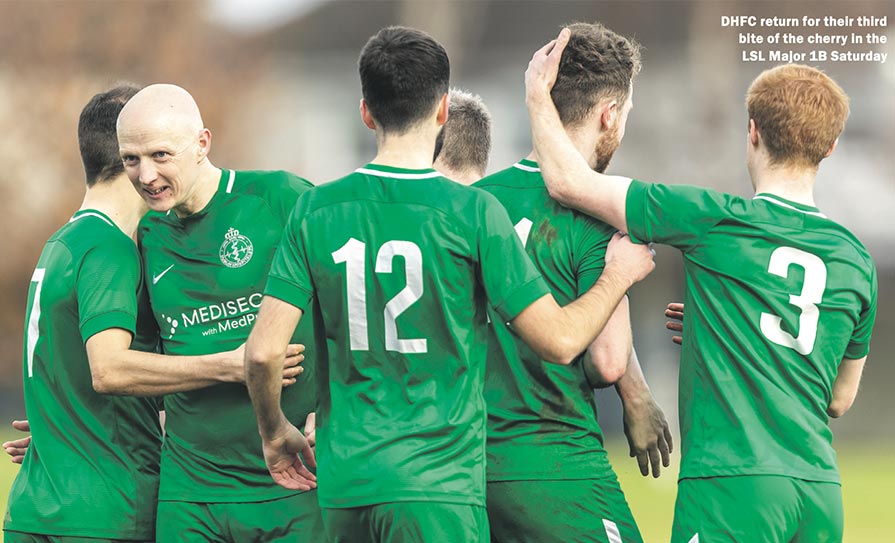
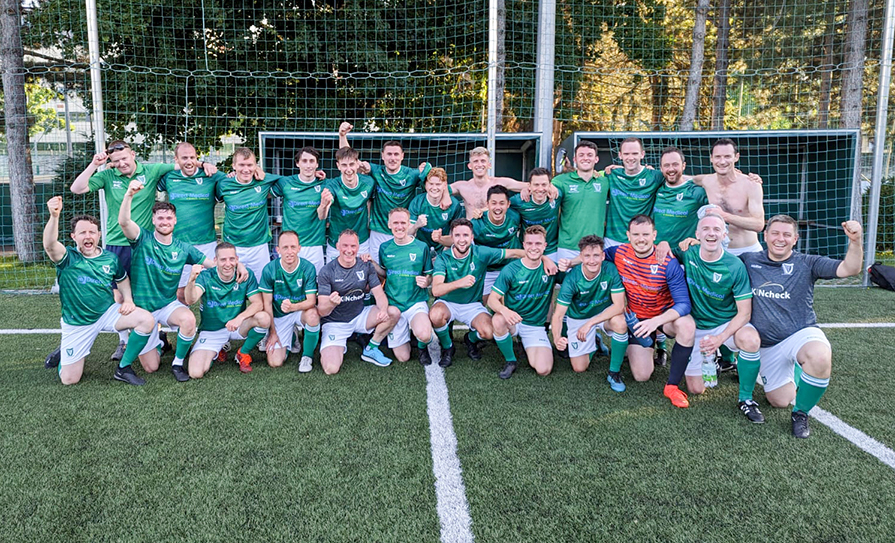




Leave a Reply
You must be logged in to post a comment.